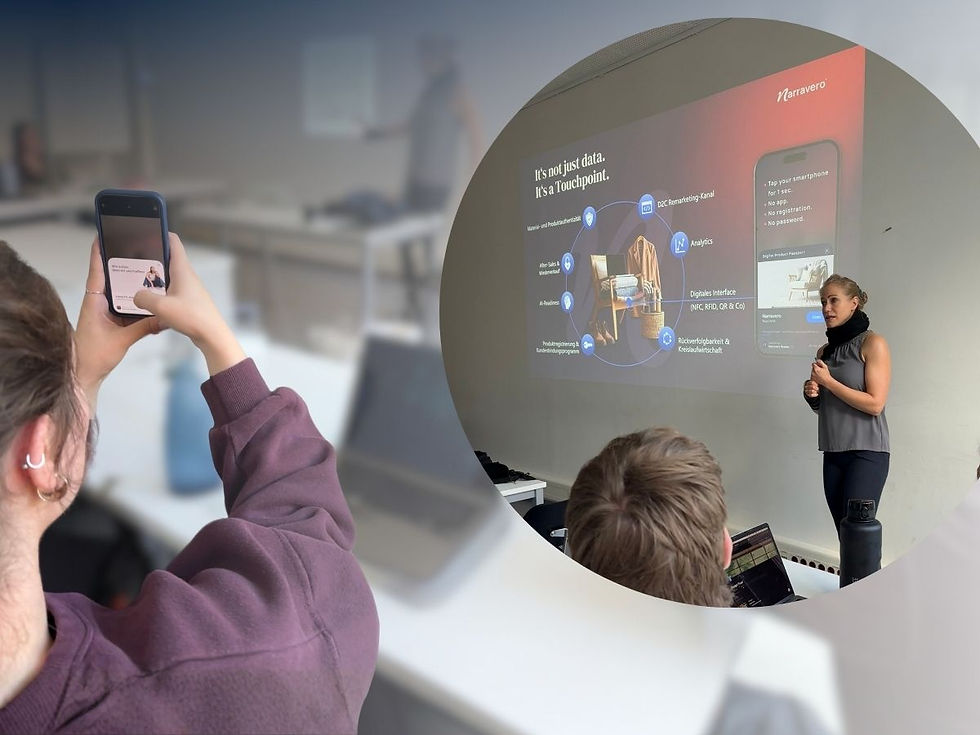Digital Product Passport & Circular Economy: EU Parliament Pushes to Extend DPP to Used and Refurbished Goods
- Lioba Galliet

- Oct 29
- 2 min read
Updated: Oct 30
What the Parliament’s resolution signals – and how brands can use this step strategically now.

Europe Draws the Line – and Extends It
The European Parliament has made its position clear: The Digital Product Passport (DPP) should apply across sectors – including used, repaired, and refurbished products.
This strong political signal carries a clear message: Transparency doesn’t end at the point of sale. It follows a product into its second life.
The effect? What began as a sustainability measure is turning into a structural foundation for a European market where circularity can be seen, verified, and communicated.
Digital Product Passport & Circular Economy: From One-Time Proof to Ongoing Relationship
Until now, brand responsibility ended at the checkout. From now on, it begins there.
A living DPP continues the story beyond purchase: repairs, spare parts, resale, refurbishment, return to circulation.
In this model, sustainability becomes verifiable – and trust becomes measurable – long after the transaction. The Digital Product Passport evolves into the memory of the circular economy and the interface between product, brand, and human experience.
The DPP Is Not a Form – It’s a System Shift
The Digital Product Passport isn’t just another compliance tool. It’s Europe’s attempt to turn data into meaning – and to make responsibility visible over time.
For brands, this means: Transparency is no longer optional. Trust still is.
Those who succeed in combining the two will be the ones shaping markets before they’re regulated.
And that’s where the real challenge begins: Translating this system shift into both communication and structure.
Thinking in Cycles, Not Campaigns
The coming expansion forces brands to see a product’s life as an unfolding narrative –not “Launch → Sale”, but “Material → Use → Repair/Reuse → Next Life.”
The key lies in making complexity accessible. And within that lie three strategic opportunities:
1. ReCommerce with a Story
Pre-owned loses its stigma and gains identity. The DPP gives second-life products a traceable origin, condition, and repair history. That builds value stability and consumer trust.
2. Service as a Brand Moment
Repair becomes communication. Every service entry, every spare part becomes part of the brand relationship – not as a call center ticket, but as a living product biography.
3. Sustainability with Evidence
Circular data turns claims into proof. Brands that structure their data early – from master data to material passports to interfaces –gain speed in verification and credibility in communication.
It becomes clear: The DPP is more than infrastructure – it’s storytelling material.
From Label to Narrative
Until now, transparency ended at the label. Now, that’s exactly where it begins.
The DPP adds context to the label: where something comes from, how it’s made and what happens next.
Brands that learn this new language let their products speak –not as a campaign, but as a continuous form of proof.
From “We say we’re sustainable”to “Our product shows you.”
And that’s where the future begins:when products start telling the truth brands have only promised.
The European Parliament has made its position clear – including the proposed extension of the DPP to used, repaired, and refurbished goods.
Read the official resolution (Document A-10-2025-0189) here:


